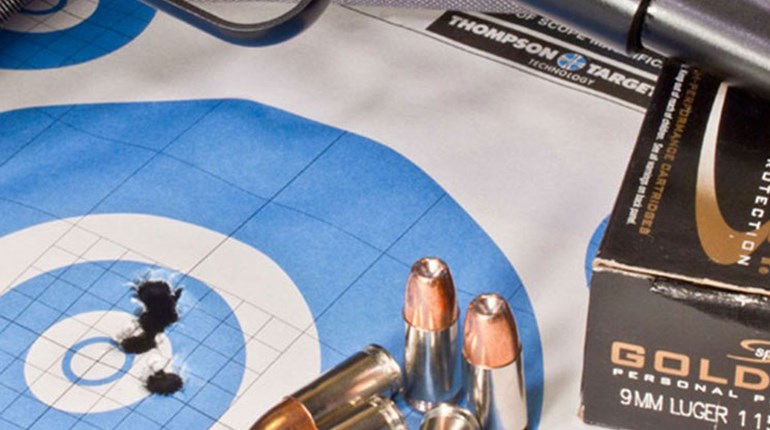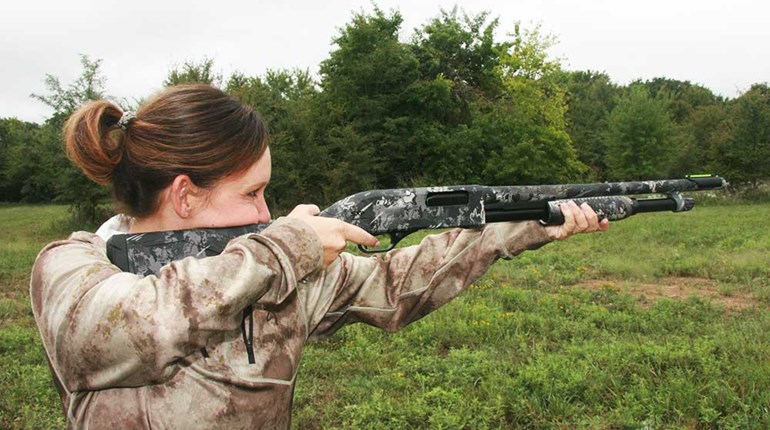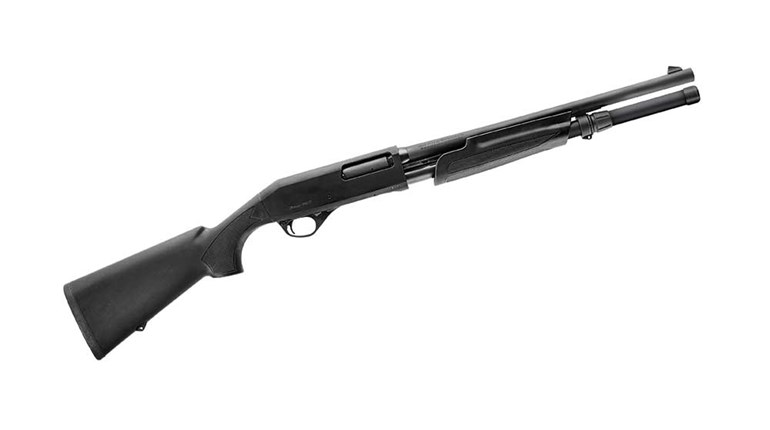A prime-coated coyote stands motionless in a sea of swaying buffalo grass. For 20 minutes he probes for movement and strains his ears. In his first year he learned to suspect everything, and he’s got two missing toes on his left paw to remind him even now, four tough Wyoming winters later. It’s well before dawn, the wind’s in his favor, and he’s all but invisible. Convinced of the absence of both food and danger ahead, this alpha male with the charcoal-streaked coat resumes his trot through the grass, analyzing the wind to scout over the next rise like a navy destroyer’s radar. Rather than cresting it, he dips into a ditch and slips though a cut in the hill until he emerges on the other side. He bounds up and into the brush then instinctively moves down several feet to conceal his silhouette. He lies down but doesn’t rest. Methodically he scans the badlands ahead of him, probing every crevice with his predator eyes and listening keenly for the faintest cry of struggle. He lays patiently, motionless, for 20 minutes before easing to his feet and trotting to another vantage. He’ll do this—pausing occasionally to breed, fight and nap—for the rest of his days. One mistake will cost the coyote his skin. Somehow he knows it.
Ten miles away four men cut the lights of the “Predator Quest” Chevy, gather their gear and slide out of their comfortable ride and into an icy wind that slices their camouflaged faces like frozen shards of glass. Each uses two hands to carefully ease his door closed; a dull hum of a truck engine means a rancher riding fence, but to a coyote a slam of a door means a killer is on the ground. They muffle their mechanizations as they fill chambers—a couple of .223s, a .22-250 and a 12-gauge—and hike a mile up the hill, using the dusty two-track to hush the sound of boots on January earth. Rather than cresting it, the predators drop to their bellies and slither up, using clumps of sage for cover. They crawl down the hill a few feet to mask their silhouettes and find hides. Once in position, they rest their rifles on their knees and scan the far hillside for movement. In the back, retaining the best vantage for calling, professional predator hunter Les Johnson surveys the scene for 20 minutes, motionless save for his predator eyes. Satisfied with the set, he raises a single-reed call to his lips. There is a coyote nearby. Somehow he knows it.
Below Les and 40 yards to his right, I choose to lay prone, mainly because I didn’t bring a seat cushion and because I know my rifle is most effective when it’s absolutely still. I’ve got instructions to watch the right flank and to take a shot as soon as I have one.
As I lie in ambush waiting on sunrise, I think back to past coyotes I’ve taken. Most were targets of opportunity—in Texas or Oklahoma while on a deer stand—while others were killed rather unsportingly over dead livestock in the middle of the night. Fact is, calling and killing coyotes in natural light is one of the most challenging hunts available. The good news? There’s no shortage of opportunity. However, there seems to be a shortage of hunters who think like predators when it comes to actually hunting them.
It baffles me why some hunters—I’m speaking of myself here, too—go to stupid lengths to  conceal themselves from deer and ducks, yet when all the official game seasons are closed and we have that eureka moment when we remember we can hunt coyotes year-round, we seem to forget all we’ve learned about the little wild dog that can eke out a living where none should be eked. So we motor out into an open field on a summer night, blast a dying rabbit from the truck’s stereo and tell our buddies to watch as we shoot the world’s most prolific predator from the window. When it doesn’t happen—and all we see is a confused pile of deer peering into the headlights—we mumble something about all the coyotes being killed off by the mange—which pads our egos—and then we go home. Rest assured the coyote was there, we just didn’t see him. We didn’t respect him enough. But there are a few who do.
conceal themselves from deer and ducks, yet when all the official game seasons are closed and we have that eureka moment when we remember we can hunt coyotes year-round, we seem to forget all we’ve learned about the little wild dog that can eke out a living where none should be eked. So we motor out into an open field on a summer night, blast a dying rabbit from the truck’s stereo and tell our buddies to watch as we shoot the world’s most prolific predator from the window. When it doesn’t happen—and all we see is a confused pile of deer peering into the headlights—we mumble something about all the coyotes being killed off by the mange—which pads our egos—and then we go home. Rest assured the coyote was there, we just didn’t see him. We didn’t respect him enough. But there are a few who do.
Those people—a small fraternity, indeed—are called good coyote hunters. Anyone who knows Les Johnson knows he doesn’t view coyotes as vermin but as cunning adversaries whose only flaw as a species is that they’re too damned adaptable. Let’s not forget that these animals are persecuted more than any in America. They can be hunted at any time, nearly anywhere, by any means, even via helicopters, thermal imaging systems, bait and anything humans can think up. The government’s tried cyanide bombs, contraceptives, bounties and urbanization, yet coyote populations thrive from upstate New York to downtown L.A. Lucky for us, coyotes can’t shoot back, or few of us would venture outside; Certainly we wouldn’t seek them out. Reality is, a coyote is a game animal if ever there was a game animal. They just need their populations thinned from time to time.
Les has made a living thinning them, so I listen when he gives an odd series of calls that are particularly fast and high-pitched. It’s almost like he’s trying to get my attention. Suddenly I snap back to reality and realize he is trying to get my attention. So I shift an eyeball and see … nothing.
Boom! roars Les’ .22-250 T/C, shattering the morning air and my nerves.Likely you’ve seen the movie “Sniper”—and the part where Tom Berringer’s Marine sniper character uses his rookie partner as bait to lure and kill the counter-sniper. That’s how I felt again: like the bait. Several years ago Les was calling for me in Colorado when a mountain lion slipped in and very nearly ruined my wardrobe if not my hairdo. Les saw the whole thing unfold from his vantage above and thought it pretty neat as the 150-pound killing machine slinked within a yard of me before I noticed. Did I shoot it? No, but I screamed awful loud. The lion bolted without scathing me, but I learned a lesson: Predators and predator hunters alike should keep their eyes wide open when Les is calling if they value their skin.
So I turn around and look at Les, who gives the thumbs-up to companion Neil Davies and me. Davies was on the left flank, and was just as surprised.“What happened?” I ask.
“Aw,” says Les, as he begins most of his sentences in his regionally unique brand of Nebraska/Wyoming drawl, “that ole coyote tried to circle you, but I got her first.” We pick up the big female about 300 yards away, dead from a 50-grain V-Max. This is all pretty remarkable to me, because I’d been sitting for the last hour without even knowing there was a coyote in the county.
Turns out Les hadn’t just been calling blindly into the wind, but he’d had a hunch, and finally saw a coyote make its way down an old eroded gulch then stand and watch silently for 15 minutes before continuing toward the calls. Evidently the song dog smelled a rat—probably me—and decided she had more attractive dinner invites. She turned to look back briefly, and that was her only mistake.
The four men—Les, his brother Jeff, Neil and I—make eight more sets before dusk and kill nine coyotes. Some come in running close enough to necessitate the shotgun, while others pick their way in cautiously. If a coyote can survive an encounter with a coyote hunter who respects him, his chances of surviving a few winters drastically improve. Many don’t. The conditions on this hunt—new snowfall and bitter cold—turn the odds even more in the human’s favor and make for happy ranchers. Though it might sound greedy to some, Les has one more set in mind before we call it a day and leave the night to its keeper, the coyote.
We drive a couple miles and exit the truck, even more stealthy now than we were in the  morning, thanks to practice. We crawl over a hill and slide into position to call over the next, but I’m not satisfied with my spot. I can’t see much, and I’ve got no desire to play the fool again. I motion to Les that I’m going up and over the next rise, and he likes the idea. So I hustle up and position myself above an eroded cut in the hill—what I know to be a likely path for a contour-hugging coyote. After 20 minutes in the waning sun, I catch movement to my right. I turn my head, and stare into the eyes of a big male coyote, 20 yards away, not in the cut as expected but on top of a rocky outcropping. We lock gazes for three seconds, during which time a certain part of me wants only to watch in awe, perhaps call a truce. But the other part of me, the part I cannot fight, overrides and makes me swing the rifle up to my face and snap the safety to fire. When the reticle comes up, there is no coyote among its wires.
morning, thanks to practice. We crawl over a hill and slide into position to call over the next, but I’m not satisfied with my spot. I can’t see much, and I’ve got no desire to play the fool again. I motion to Les that I’m going up and over the next rise, and he likes the idea. So I hustle up and position myself above an eroded cut in the hill—what I know to be a likely path for a contour-hugging coyote. After 20 minutes in the waning sun, I catch movement to my right. I turn my head, and stare into the eyes of a big male coyote, 20 yards away, not in the cut as expected but on top of a rocky outcropping. We lock gazes for three seconds, during which time a certain part of me wants only to watch in awe, perhaps call a truce. But the other part of me, the part I cannot fight, overrides and makes me swing the rifle up to my face and snap the safety to fire. When the reticle comes up, there is no coyote among its wires.
I wait 20 more minutes until last light, with Les harping on the call, but I know he’s not coming back. Would I? Conceding, I drop down into the gully, walk around a bend and look to the loose dirt. I notice his tracks, so I kneel down to study them. Oddly, clearly, two toes from his left forepaw print are missing. I follow the tracks up the rocks, where I lose them, but I continue my gaze up and into the wild Wyoming countryside beyond. I know full well the coyote will not be silhouetted ignorantly on a hillside howling like in the movies, but rather lying motionless in the grass. He’s not gone, he’s just watching with those keen predator eyes, waiting for his break. He’s always been there, and I suspect he’ll be here making a living long after we’ve been shot out. Somehow I know it.
Les Johnson’s Top 5 Coyote-Thinning Tips
1.) Have an in-depth conversation with the landowner before hunting new property. Farmers and ranchers can tell you where they’ve seen and heard coyotes. This is your most valuable information.
2.) Stick to the basics when calling. My only call is a jackrabbit-in-distress.
3.) Hunt the edges first and work your way to the core. I like to nibble around the edges, picking off the singles, before going directly where the coyotes are most concentrated.
4.) Have patience. Sit for at least 30 minutes on each stand and take notice of movement of other animals. The area will speak to you and let you know how you need to hunt it if you sit and observe.
5.) Hunt with a partner. The best path to success in an unknown territory is to have a partner watch an area that you cannot see from your setup. This helps you nail coyotes that come to your call but that you can’t see. Plus, your partner will observe things that can ultimately help tweak your game plan for more success.




































